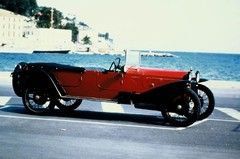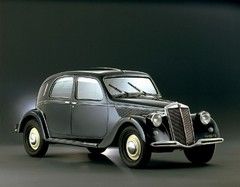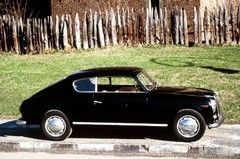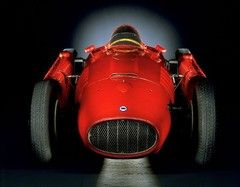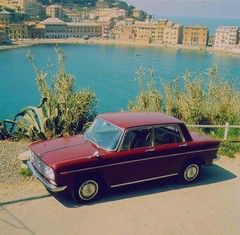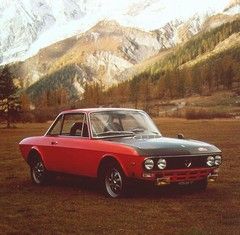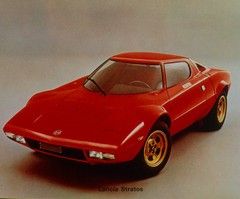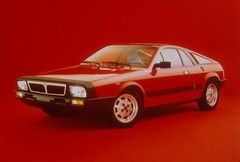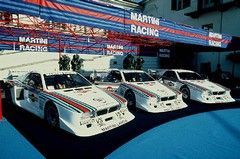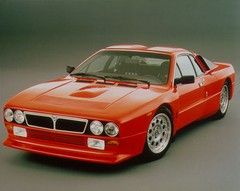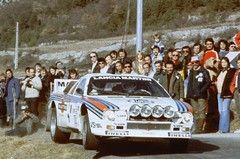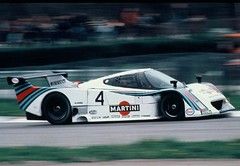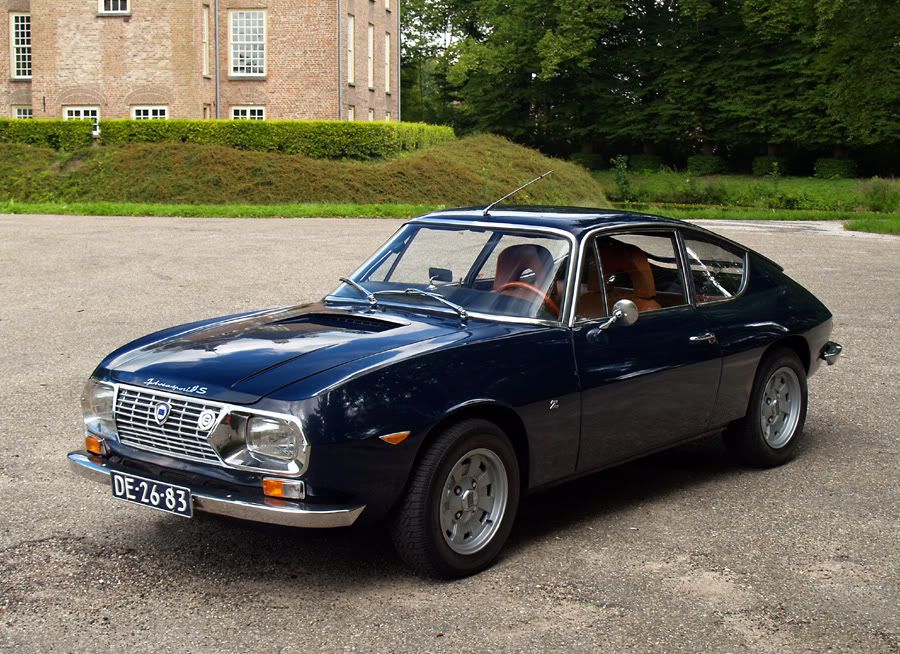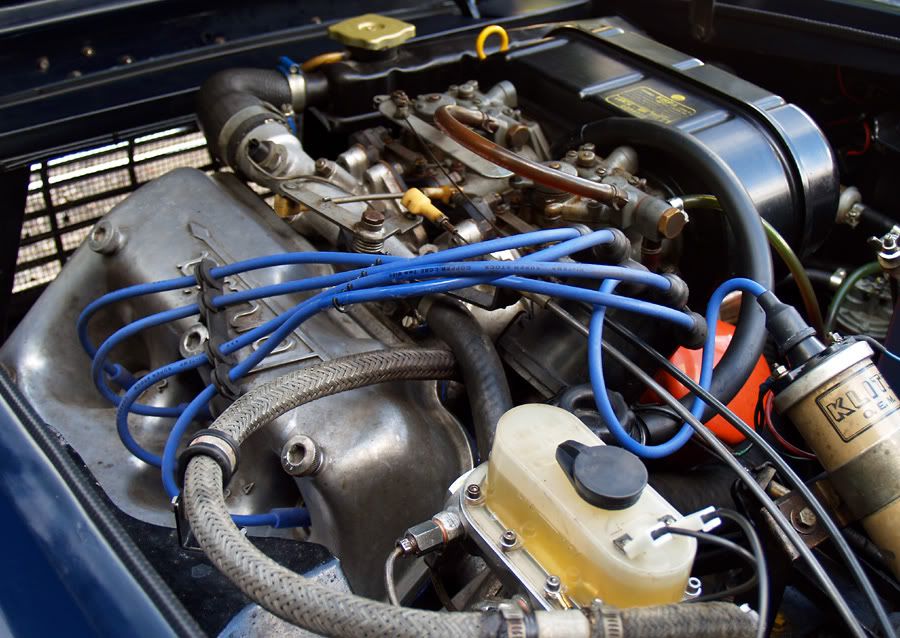Ton-up for Lancia
As Lancia celebrates its 100th year, Andrew Noakes looks back at the innovative company

1980s Lancia Delta
Fabbrica Italiana Automobili Torino is a bit of a mouthful, so soon after the company was founded in 1899 it became known as F.I.A.T. Rather than create a new motor manufacturing business from scratch F.I.A.T. bought Ceirano, a small car and bicycle workshop with a small team of engineers which included an eighteen-year-old named Vincenzo Lancia.
|
The 1920s
The 1930s
The 1950s
The 1960s The 1970s The 1980s |
Lancia had joined Ceirano as a book-keeper, because his father was keen for him to have a career in business. But Lancia’s interests were in engineering, and quickly his desk-job was forgotten.
When F.I.A.T. took over he became chief tester and works racing driver, building quite a reputation for skill and bravery behind the wheel. His understanding of the most advanced motor car technology also grew, until he felt able to branch out with a company of his own.
Taking an engineer colleague, Claudio Fogolin, with him as a partner Lancia established his new firm in 1906.
Just a few weeks later, Lancia’s factory and all its contents were destroyed by fire. Despite the disastrous start, Lancia pressed ahead with his first car, called the Alpha -- beginning a tradition on naming cars after Greek letters which endures to this day.
Unlike the brutal 11-litre racing F.I.A.T.s, Lancia’s cars were lightweight machines with high-revving 2.5-litre four-cylinder engines.
Innovative Lancia
Gradually the cars became more daring and innovative -- none more so than the landmark Lambda of 1922.
In an age when most cars had in-line engines, separate ladder chassis and beam-axle front suspension, the Lambda bristled with modernity: a monocoque bodyshell, a narrow-angle V4 engine, and independent sliding-pillar front suspension.
A V8 Dilambda followed, taking the company further upmarket. Its successor, the Astura, proved to be an effective competition car, acted as a military staff car and was apparently a favourite of Mussolini.
If the Lambda had been innovative, the Aprilia would be little short of revolutionary – though it was to be one of the last cars Lancia himself would see. He died unexpectedly in 1937, aged just 56.
For the first time Lancia applied aerodynamics to a car body, giving the Aprilia a smooth undertray and a flowing shape which led to an impressive drag coefficient of 0.47. Sliding pillars were retained at the front, with the rear end suspended by swing axles, torsion bars and a transverse leaf spring – a combination which provided peerless handling. Power came from a new narrow-angle V4 with a cross-flow cylinder head and a single overhead cam.
Post-war, Vincenzo’s son Gianni Lancia took over as managing director and the great Vittorio Jano led Lancia design. Innovation continued: the Aurelia of 1950 introduced the first production V6 engine, a 1,750cc 60-degree unit coupled to a transaxle transmission (the gearbox in unit with the final drive).
A year later the Aurelia GT coupé appeared, beautifully balanced both visually and dynamically. At first it used a 2.0-litre version of the V6, but the definitive GT appeared in 1953 with a 2453cc V6 and new de Dion rear suspension.
Motorsport
Aurelias triumphed in the great Italian road races of the day, the Mille Miglia and the Targa Florio, but Gianni Lancia’s sights were set even higher.
After a string of sports-racing machines Lancia produced the D50 Grand Prix car, always fast but initially a handful – even for drivers of the calibre of Alberto Ascari and Luigi Villoresi. Ascari dropped his into the harbour during the 1955 Monaco GP. Days later he died in a Ferrari sports car at Monza, and Gianni Lancia lost his enthusiasm for racing.
The D50s were passed to Ferrari, and Fangio used them to win the World Championship in 1956. Gianni Lancia washed his hands of the company bearing the family name, and moved to South America.
The company was taken over by industrial giant Italcementi, headed by Carlo Pesenti, and produced a new generation of front-wheel drive cars. The boxy Fulvia saloon was profitable, and it sired a gorgeous coupé which took Lancia back into motor sport – this time in rallying, ultimately with the Fulvia 1.6HF.
But Lancia was losing money, and by 1969 Italcementi had lost enough: Lancia was rescued by Fiat.
It was the Fulvia that provided the running gear for a Bertone concept car called Stratos, in 1970. Lancia competition boss Cesare Fiorio developed it into a world-beating rally car, powered by the Fiat-built Ferrari Dino V6. In the hands of Sandro Munari and Bjorn Waldegaard the Stratos cleaned up in three successive world rally championships, 1974-76, and burned itself into the memories of rally enthusiasts the world over.
Red rot
The Beta became equally famous, but for a different reason. Fiat’s bean-counters demanded that Lancia use more Fiat parts to cut costs, so the Beta used a tweaked version of Fiat’s twin-cam in-line four. That wasn’t the problem: the Achilles’ heel turned out to be rust. Dubious quality steel, woeful rust prevention and design flaws encouraged Betas to corrode spectacularly fast.
Here, BBC TV’s That’s Life! programme regularly lambasted the Beta, and the company’s reputation never really recovered.
Which is a shame, because there were more great Lancias to come. Though the original Montecarlo was under-developed, it led to some spectacular turbo Group 5 cars, the LC1 and LC2 Group C machines and the effective 037 rally car.
Fiat’s Ritmo/Strada floorpan was given a sharp-edged Giugiaro hatchback body to create the fine Delta, a terrific road burner in HF Turbo form and the starting point, in theory at least, for the turbocharged and supercharged Delta S4 rally car. A closer relation was the four-wheel drive Delta Integrale, which was ludicrously fast on any road in any weather conditions.
New Lancias?
Sadly Lancia ended right-hand drive production in 1994, and Lancia has yet to return to Britain. The tiny numbers of RHD Lancias is might be expected to sell are unlikely to recoup the costs of development and distribution, and in any case parent company Fiat has more pressing worries at the moment than building a few Lancias for British enthusiasts.
In mainland Europe, the name lives on, and even if a production version of the recent Fulvia coupé concept seems increasingly unlikely, the rumours are that some interesting new Lancias are on the way.
Vincenzo would no doubt have approved.
Links
Copyright © Andrew Noakes 2006
I also had the misfortune to be given a Lancia as a hire car in Rome
a couple of weeks ago,it was called a MUSA what a pile of S**t.
I can quite honestly say it was the worst designed car and the most dangerous I have driven.
The steering was so light it was impossible to keep in a straight line, the pedals were so badly offset I was almost sitting sideways,
you could not adjust the nearside mirror properly so had to lean forward to look in the mirror to see if it was safe to pull in.The seats were awful,they were so short that the top of the seat was digging into my neck, again I had to lean forward to stop the pain.
As for the engine, this thing was in group D and came with 1200cc's of stunning diesel power, what an absolute joke.
Luckily I was able to exchange it for an Opel when I got to Pescara.
If Lancia want to get back into the British market they need to produce a car you can drive.
What where they thinking? I've seen many of the new cars in Europe over the years and am shocked at what has been produced. Who is running Lancia these days? Monkeys?
Lancia used to produce exciting, interesting and quirky cars. If they could only take a step back as they have done with the Fulvia Concept, they might be able to do something that people want. The Lancia name has been besmirched over the years. I only hope that they can return to their former glory. If they ever manage to pull themselves around, I'd seriously consider them again.
mini_ralf said:
My father had a S3 Fulvia, 2000 Coupe
mini_ralf, it must have been a special - AFAIR the S1/S2/S3 engined Fulvias (Rallye or Zagato bodied) went up to the beautiful 1.6 litre all alloy V4.
A beautiful motor and loaded with design firsts - especially for a 60s car (except for its despised worm-and-roller steering system!).
>> Edited by AMG Merc on Wednesday 24th May 07:01
AMG Merc said:
My father had a S3 Fulvia, 2000 Coupe
mini_ralf, it must have been a special - AFAIR the S1/S2/S3 engined Fulvias (Rallye or Zagato bodied) went up to the beautiful 1.6 litre all alloy V4.
A beautiful motor and loaded with design firsts - especially for a 60s car (except for its despised worm-and-roller steering system!).
>> Edited by AMG Merc on Wednesday 24th May 07:01
Whoops. What I meant to say was a S3 Fulvia, a Flavia Coupe 2000 etc etc... Even now I would still love to get my hands on a Fulvia. The only thing holding me back is my wife...
>> Edited by mini_ralf on Wednesday 24th May 15:49
Forums | Alfa Romeo, Fiat & Lancia | Top of Page | What's New | My Stuff

